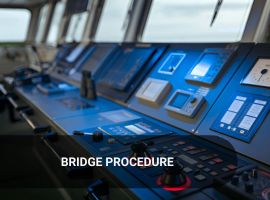
Aims:
The aim of bridge procedures is to ensure safe, efficient, and compliant navigation by minimizing human error, enhancing situational awareness, and standardizing bridge operations. These procedures help maintain safety, regulatory compliance, and effective teamwork on board.
Objectives:
1. Enhance Navigational Safety – Reduce collision and grounding risks by following COLREGS, SOLAS, and IMO guidelines.
2. Improve Watchkeeping Standards – Maintain proper lookout, conduct structured watch handovers, and ensure continuous position monitoring.
3. Standardize Passage Planning – Implement the Appraisal, Planning, Execution, and Monitoring process for safe voyage execution.
4. Ensure Effective Communication – Promote Bridge Resource Management (BRM) and use closed-loop communication to avoid misunderstandings.
5. Familiarization & Maintenance of Equipment – Train officers on ECDIS, Radar, ARPA, AIS, GPS, and BNWAS, ensuring proper operation and upkeep.
6. Emergency Preparedness – Establish checklists for emergencies like man overboard, collision, fire, and steering failure to enhance response efficiency.
Modules:
1. Introduction
2. ISM Code and Bridge Team Regulations
3. Bridge Resource Management (BRM)
4. The Bridge Team
5. Master’s Role & Standing Orders
6. Bridge Equipment
7. Passage Planning
8. Bridge Checklists
- Teacher: AIMS MARITIME

